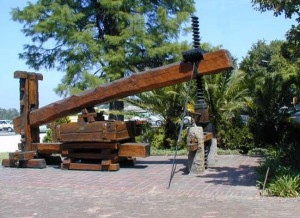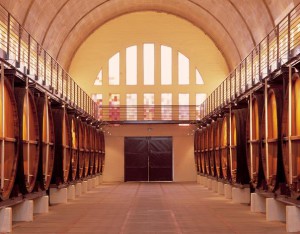A journey through wine and time
Wednesday, October 29th, 2014
The wine revolution is all around us: in antiques that still populate many estates
“It was referred to as the ‘natural wine revolution’,” says David Hughes pouring some of his encyclopaedic wine knowledge from his mind into mine. Though the man needs no introduction, he’s a celebrated wine author, winemaker, distiller, wine judge and more.
We’re talking about antique winemaking equipment. And no, the subject is not dull in the slightest. A dive into the past reveals that the South African wine industry was at the heart of a cutting-edge wine revolution – and the casualties of this mechanised upheaval are all around us in the winelands, from the old wine press that greets you at an entrance to the barrels locked away in countless cellars that have breathed more breaths than you ever will.
“We changed from using equipment that had been used for 300 years to a mechanised wine industry in an instant,” continues David.
And all because of one wine. In 1959, the Stellenbosch Farmers’ Winery (now Distell) launched Lieberstein, a semi-sweet table wine and the first of its kind. “It came along, and it was fresh and fruity,” says David. Lieberstein was a catalyst, not only for South African wine drinking habits, but for the way the industry operated as a whole.
Its growth in the marketplace was, to quote David, ‘mindboggling.’ It wasn’t just selling thousands of litres (which in those days would have been a runaway success too) but millions! In 1964, 31-million litres of Lieberstein were sold. “It was the biggest selling bottled wine in the world. We couldn’t draw on anybody else to make it.” So things changed, and they changed quickly. (Picture all those millions of wines being bottled and labelled by hand? Mindboggling indeed.)
There were no tankers for carrying liquids (other than petrol), no high-speed bottling machines. “The stainless steel industries owes a lot to Lieberstein for making all the steel tanks that were needed,” says David.
And because Lieberstein was a sweet wine it needed to be sterilised, else the sugar would start to ferment (bye to fresh fruit flavours). So the iconic wine was pasteurised in diary farms in the same manner as milk or beer.
To steal a phrase, ‘when you drink wine, you drink history’ and all that came before. In fact, there’s a drop of Lieberstein in every bottle of South African wine made today; well, in our heritage anyhow.
Next time you visit an estate, keep an eye out for antique wine artefacts, and you may just see the tale of a wine revolution.
David says that many of the older estates have kept and displayed their old winemaking equipment.
Some places to go on the journey through wine and time include:
Go see the great big wooden wine press on the corner of Dorp Street in Stellenbosch at the head office of Distell.

‘
KWV is a living museum’ from old vats and equipment to the largest barrels in the country in the famed Cathedral Cellar.

All around
Backsberg are hints of the historic estate’s past.
Delheim proudly displays its antique paraphernalia from the moment you enter, and in the cellar they still have some of the old pumps you turn by hand.
At Van Ryn’s (brandy distiller), to this day they use ancient stills.
Bosman Family Vineyards has a museum of farming equipment adjacent to their cellar (which is actually a converted old red wine vat).
Head to Die BergKelder to see antique casks carved with beautiful imagery.
Take a trip through Nederburg’s Old Cellar Museum, a space dedicated to the long history of the farm.
And go on a historical tour of the werf and the homestead at Boschendal.
– Malu Lambert